Recovered, But at a Crossroads
By Greg Frick, HFO Investment Real Estate
Over the last three years, the ups and downs in the apartment market have been unlike any other period I can remember. In 2020 came the outbreak of the COVID-19 pandemic and the onset of unprecedented challenges it would bring. In 2021, while working through the effects of the pandemic, the industry saw strong rent growth and a record-breaking year for multifamily investment sales. Then, 2022 brought the fight to curb inflation and the meteoric rise of interest rates. And during this whole period, there was also the constant pressure of the legislative changes and restrictions on owners and operators of rental housing.


Even for thrill seekers, this up-and-down roller coaster the past three years has been a ride unlike any other.
In the first quarter of 2022, even with 40-year highs in the various U.S. measures of inflation, the Federal Reserve still held the federal funds rate close to zero percent and was still buying billions of dollars of bonds every month to stimulate the economy. “Inflation was transitory,” was the reasoning behind the continued policy. The policy changed quickly, starting in March with the Federal Reserve raising the Federal Funds
(continued on page 2)
HFO Investment Real Estate LLC • 2424 SE 11th Ave • Portland, OR 97214 • (503) 241.5541 • www.hfore.com APARTMENT INVESTOR HFO Investment Real Estate LLC • 2424 SE 11th Ave • Portland, OR 97214 • (503) 241.5541 • www.hfore.com
SPONSORED
• Rents • Vacancies • Interest Rates • Employment • Transactions • Permits UP DOWN A member of HIGHER OR ? 2023 FORECAST December 2022 THE NORTHWEST
IN PART BY:
Table of Contents
Recovered, But at a Crossroads by Greg Frick, HFO Founding Partner 1
“Pay Close Attention to the New Value”: Thoughts from Chris Robinson, Tax Attorney 3
Submarket Vacancy Rates and Concessions for Greater Portland, the Valley, & Bend as reported by Multifamily NW
RECOVERED, BUT AT A CROSSROADS
Rate and continued the policy throughout 2022. As of November, the rate is near 4.00%.
This new reality of higher interest rates is adjusting underwriting assumptions and requiring significantly more equity or cash in the purchasing or refinancing of apartment properties. The changing financial markets make pricing assets more challenging, with the loan terms and requirements adjusting weekly.

4
A Recap of 2022 & Look Ahead at 2023 by Michael Pierce, HFO Research Analyst 5
Opportunities for Students & Owners at the PSU Center for Real Estate by Michael Havlik, CPM® PSU Academic Director, Property Management
7
Oregon & Washington Market Round Ups 8
Federal Bills Related to Housing | 2022 by Michael Pierce, HFO Research Analyst 12
Clark County’s Economy: Recovered and Then Some by Scott Bailey, Regional Economist, Washington Employment Security Department
Covid Emergency Orders End, Tenant Protections Remain... With More Coming by Ryan Makinster, Director of Government Affairs, Washington Multi-Family Housing Association
14
Yet the fundamentals of the multifamily market are still very favorable and continue to improve.
The new supply of multifamily units will slow down due to the high cost of construction coupled with the increased cost of financing such projects. The delta between existing apartment values and replacement costs will continue to increase, and it won’t get cheaper or easier to deliver new multifamily projects to the market.
The homeownership rate will decrease as the increase in interest rates will put entry-level for-sale housing out of reach for many potential buyers. This will add to the market’s already strong demand for rental housing units.
16
As Oregon Economist Amy Vander Vliet discusses on page 22, the economy is at a crossroads, and the path leading to recession is on everyone’s minds. These are uncertain times and setting a plan to achieve your investment goals and strategies will be more complex. The HFO team is ready to leverage our experience and in-depth market knowledge to help you get there in 2023.
Interview with Washington Lt. Gov. Denny Heck by Aaron Kirk Douglas, HFO Broker 18
Oregon Economic Update: Recession on the Mind by Amy Vander Vliet, Metro Region Economist, State of Oregon Employment Department
20
The Bridge to 2023 – Trust Experience, Embrace Opportunity by Blake Hering, Principal, Gantry 21
A Guide to Oregon’s Big Parking Reform by Catie Gould, Researcher, Sightline Institute 22
24
Can I use my Exchange Funds to Pay for Loan Fees and Development Costs? First American Exchange Company 2 HFO Investment Real Estate • www.hfore.com
Pay Close Attention to the New Value
from Chris Robinson, Tax Attorney, as told to HFO
We asked Chris Robinson, a member of the Oregon State Bar since 1977 who has successfully represented clients in complex property tax situations before the Oregon Tax Court and the Oregon Supreme Court, to share his thoughts on the impacts of real estate tax changes on the multifamily market.

I expect deals for multifamily will be fewer until the expectations of buyers and sellers coalesce. Right now, apartment building owners don’t want to sell, because buyers are going to say they can’t be negatively leveraged, and interest rates are significantly above what they were nine or 10 months ago. So, we’re kind of in this pause period.
But in terms of the fundamentals, it seems like occupancy rates are decent and rents are holding. The two property types that have been resilient have been industrial and multifamily, retail less so. Office buildings, much less so. That’s where we’re doing most of our work, currently. And imagine that for the next year or two, most of our work will be on office buildings, for obvious reasons.
If we’re talking about this snapshot of time, it is just really different. I think everyone’s trying to figure it out. What is my property worth today versus what it was before? The interest rates crept up. They jumped up.
I was just talking to someone who owns an apartment building, and he said the velocity of sales has really come to a halt because everyone’s trying to figure things out.
Our view of the world from the property tax perspective is that despite the restrictions like Measure 50, we have seen property taxes increase dramatically over the past five or six years due to bond measures, and the creepup 3% increase in assessed value. But for much of Multnomah County, the tax rate is 2.67%, which is 10+%
above what it was three years ago. It’s all the metro bond measures that are increasing the tax rate, and that does impact multifamily because it impacts the bottom line. But I think, for the most part, people have been able to raise rents to at least keep pace, if not increase that operating income.
For us, the opportunities in the multifamily are — and what people really need to pay attention to is — when they’re valued as complete. Because that sets the tax base forever. So, they really need to look carefully at what the county came up with for value. And then the other is properties coming out of exemption. I just talked to a client from San Francisco who has a project here, and it just came off the historic freeze. So, it gets revalued at market. Those are the kinds of things that new construction properties coming out of either an affordable housing exemption or a historic exemption really need to pay close attention to — the new value.”
Ten Highest Combined State & Local Individual Income Tax Jurisdictions in the U.S. Top marginal tax rates shown for tax year 2022
Area Combined state and local rate Top state marginal tax rate
Local rate Bracket for highest state rate (single filer)
Bracket for highest state rate (married filing jointly)
New York City, NY 14.776% 10.9% 3.876% $25,000,000 $25,000,000
Portland, OR 14.6937% 9.9% 4.7937% $125,000 $250,000
California 13.3% 13.3% N/A $1,000,000 $1,250,738
Newark, NJ 11.75% 10.75% 1.0% $1,000,000 $1,000,000
Hawaii 11.0% 11.0% N/A $200,000 $400,000
District of Columbia 10.75% 0.0% 10.75% $1,000,000 $1,000,000
Iowa 10.0654% 8.53% 1.5354% $75,420 $75,420
Minnesota 9.85% 9.85% N/A $166,040 $276,200
Maryland 8.95% 5.75% 3.2% $250,000 $300,000
Vermont 8.75% 8.75% N/A $206,950 $251,950
Source: “Oregon State and Local Tax Burdens” Ernst & Young for Oregon Business & Industry, October 2022 https://oregonbusinessindustry.com/report-details-soaring-business-tax-burden-in-oregon-portland/
Thoughts
3 The Northwest Apartment Investor
Submarket Vacancy Rates and Concessions for Greater Portland, the Valley, & Bend
RENT RATES ( Portland/Vancouver Metro)
According to Multifamily NW’s latest survey of over 65,000 units, the Portland Metro Fall 2022 vacancy rate of 3.59% is up 0.23% from a year ago and rents in the Portland MSA have increased 7% overall since the spring. Yardi is also reporting positive gains with a YOY Rent Change of 10.8% for Q3 2022.
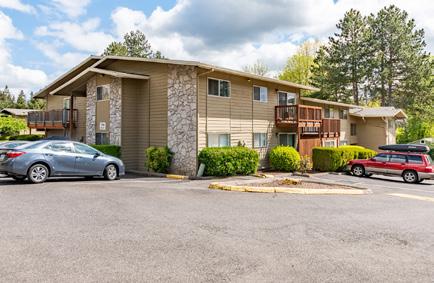
According to Multifamily NW, submarkets that saw significant overall rate increases in the past year include East Vancouver (10%), West Vancouver (10%), and Clackamas (6%).
VACANCY RATES (Portland/Vancouver Metro)
Current vacancy rates are highest in areas with new construction, including Northwest Portland (4.29%), Clackamas (5.1%), Downtown Portland (5.37%), SW Portland (3.68%), and Lake Oswego/West Linn (4.6%). Among the lowest are those in suburban areas including Tigard/Tualatin/Sherwood (3.2%) and Outer NE (2.4%). This continues the trend we saw last year of low vacancies in suburban markets where there have been few to no new units delivered.
CONCESSIONS
Fortunately, rents are up with dramatic increases on turnover, having been held down artificially since before the onset of the pandemic. We continue seeing rent increases in the suburbs. Urban occupancy has bounced back, with a sharp reduction in concessions for most stabilized properties. We have seen the typical seasonal concessions come back this fall, and once spring arrives, we will have a better gauge of the overall health of the rental market.
VALLEY UPDATE
In the Willamette Valley, Salem and Eugene/Springfield both have vacancy rates of about 2.6%, and Bend/Redmond has a rate of 2.31%.
Rents have increased approximately 7% in the Salem area, 8% in Eugene/Springfield, and 5% in Bend-Redmond (there were 1,988 units surveyed in the Bend/Redmond market).
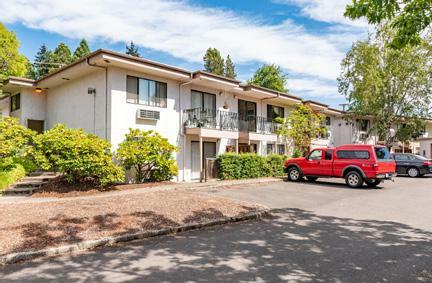
“Portland has become a major market for institutional investors chasing both population growth and a diverse economic base.”
HFO Sale: Four Seasons Greentree 108 Units in Eugene, OR HFO Sale: Garden Home West 115 Units in Portland, OR
– Costar Multi-Family Capital Markets Report October 2022
4 HFO Investment Real Estate • www.hfore.com
Sources: Multifamily NW Fall 2022 Report, Yardi Rental Trends Report 3Q22
A Recap of 2022 & Look Ahead at 2023
By Michael Pierce, HFO Investment Real Estate Research Analyst
In the Portland/Vancouver metro area, market rents are up 6.5% yearover-year, according to Multifamily NW survey data. Most submarkets saw rents increase. The vacancy rate now averages approximately 3.59% due to the limited availability of new units. This trend will continue in 2023 with the limited number of new units coming online.
Oregon’s ongoing deficit of affordable housing units, business expansion, and an anticipated influx of climate refugees from areas facing drought and wildfires, all add to the expectation that the Pacific Northwest’s housing market will remain strong well into the future.
Market Vacancy and Rents
Absorption of new product has remained relatively strong due to continued high levels of in-migration. With home prices remaining high, we should continue to see low vacancy rates into 2023.
Institutional Transactions ($10
million+)
In 2021, there were 96 apartment transactions priced over $10 million in the Portland metro area. Through the end of October 2022, there were 56 apartment transactions priced over $10 million. This represents a decrease of 42% compared to 2021. If the trends hold, 2022 will be in line with 2016’s 60 transactions (the 2022 annualized number is 67), the Portland MSA’s secondhighest year for institutional sales.
(Fall)
5.00%
2021 2022 2014 2012 2016 2015 2013 2018 2020 2019 2017 3.36% 50.4% 4.42% 3.59% (Fall)
2021 2022 2014 2012 2016 2015 2013 2018 2020 2019 2017
PORTLAND METRO AREA VACANCY
2.00% 1.00% 0.0% 3.00% 4.00% 6.00%
PORTLAND METRO AREA RENT / SF $1.00 $0.50 $0 $1.50 $2.00 $2.50
$1.86 $1.74 $1.98 $1.76
Under $10 Million $10 Million+ Source: CoStar Multi-Family 10+ Units – Portland MSA
PORTLAND METRO AREA TOTAL TRANSACTION VOLUME
2021 2022 2014 2012 2016 2015 2013 2018 2020 2019 2017 (Annualized) (YTD Oct) 5 The Northwest Apartment Investor
Billions
$2.5 $3.0 $3.5 $1.0 $0.5 $0.0 $4.0 $1.5 $2.0 $4.5
$10 Million+ Transactions in 2022:
• Trailmark; 100 units in Gresham sold for $20 million

• Aspenridge; 240 units in Vancouver sold for $57.15 million
• The Nash; 180 units in Gresham sold for $34 million
• Abbey Creek; 84 units in Portland sold for $31 million
Non-Institutional Transactions (under $10 million)
We have seen 114 non-institutional transactions below $10 million through October 2022, accounting for over $451 million in dollar volume. If this trend holds, 2022 will see less than the 161 transactions and $572 million of 2021. The transaction numbers in 2022 will be more in line with 2018 and 2019 totals.
Permits
Portland Metro Area permits for 5+ units have risen steadily from a low of 794 units authorized in 2009 and a high of 9,979 in 2017 (the year Portland’s inclusionary housing law took effect) to 6,325 in 2021 and 6,701 projected for 2022, based on 5,134 applications through September. Still, housing production has not accelerated enough to meet the estimated demand for new units. (Note: permits do not always result in completions.)
We firmly believe our state’s housing issues can best be solved by encouraging development rather than constricting it.
Despite a six-year self-declared housing emergency, our elected officials have yet to work with all stakeholders to develop ideas and solutions addressing our market’s challenges with affordability, instead implementing regressive policies that look good in the press but have significant real-life consequences for developers and owners. These policies have the opposite impact of the desired outcome and often hurt the very people elected officials are attempting to help.
Sale: Aspenridge
HFO
240 Units
WA Source: U.S. Census Bureau 5+ Units through September, 2022 0 2,000 4,000 6,000 8,000 10,000 12,000 2022 2014 2012 2016 2015 2013 2018 2020 2021 Annualized 2019 2017 PORTLAND METRO AREA MULTIFAMILY PERMITS ISSUED - 5+ UNITS Under $10 Million $10 Million+ Source: CoStar Multi-Family 10+ Units – Portland MSA 0 80 100 120 20 140 40 160 60 180 2021 2014 2012 2016 2015 2013 2018 2020 2019 2017 Transactions PORTLAND METRO AREA TOTAL TRANSACTION NUMBERS 2022 (Annualized) (YTD Oct) 6 HFO Investment Real Estate • www.hfore.com
in Vancouver,
Ultimately, those increased fees and costs make the development and operation of rental housing more expensive and discourage the production of badly needed rental housing units.
We continue to call for leaders to assemble a roundtable of property owners and developers in both Oregon and Washington to work together on how we implement effective, long-term solutions to the complex housing challenges we face. The status quo of issuing edicts and mandates is doomed to fail.
HFO Sale: Abbey Creek 84 Units in Portland, OR

Opportunities for Students & Owners at the
PSU Center for Real Estate
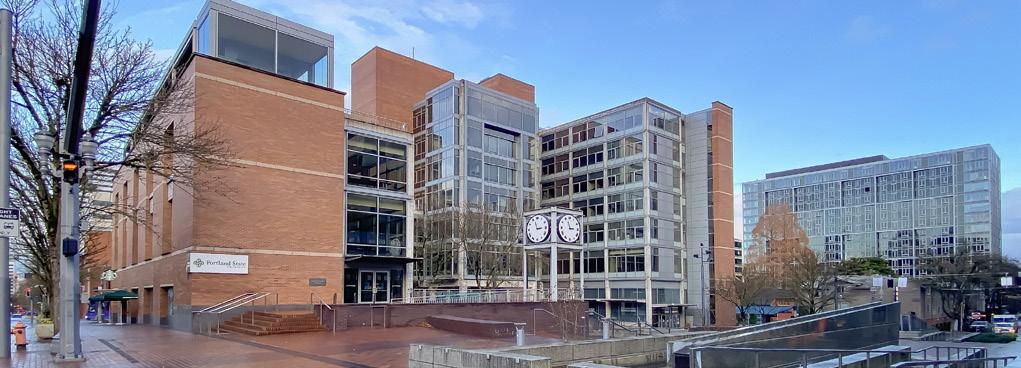 Michael Havlik, CPM® Academic Director, Property Management mhavlik@pdx.edu
Michael Havlik, CPM® Academic Director, Property Management mhavlik@pdx.edu
The only program of its kind in Oregon, Portland State University’s Center for Real Estate is developing the next generation of diverse, professional property management talent. Undergraduate students from more than 20 different degree programs are supplementing their education with our certificate or minor in Real Estate Property Management.
With a curriculum that utilizes data analytics, case studies, property visits, and exposure to industry practitioners, our students enter the workforce with the skills necessary to make an impact and quickly advance.
This wouldn’t be possible without the support of our industry partners who are sharing their experiences with students, participating in our real estate conference, sponsoring scholarships and our center, and offering internship opportunities in both commercial and residential management.
Our students receive the greatest benefit when we connect directly with industry. If you have interest in being involved through guest lecturing, sponsorships, hosting a tour, offering an internship, or would just like to stop by and tour our state-of-theart Karl Miller Center, we welcome your partnership!
7 The Northwest Apartment Investor
Regional Round Up | Oregon
Eugene-Springfield / Lane County
Population
Lane County’s population grew 8.2% between 2010 and 2020, while the city of Eugene saw population growth of 12.2% over the same period. In the city of Eugene, 49.9% of housing units are renter-occupied.
Employment
The government, education, healthcare, professional services, and leisure and hospitality sectors make up more than 50% of the MSA’s total workforce. The largest employers in Lane County are PeaceHealth, the University of Oregon, Eugene School District, the U.S. Government, the City of Eugene, and the Lane County government. The Eugene-Springfield metro area is also home to an emerging technology sector, known locally as the Silicon Shire. Several local tech companies now have over 100 employees each in the metro area, including 3Cinteractive, Alacrity Services, Datalogic ADC, Inseego, Presidio, and Symantec. Forty-two percent of Eugene residents have a bachelor’s degree or higher, and the median household income in Lane County is $59,152.
Housing & Local Politics
Between August 2017 and August 2022, the average sale price for a home in Lane County increased from $267,500 to $467,500. As of August 2022, only 490 permits were issued for multifamily units in the Eugene-Springfield metro area. If this pace continues for the rest of the year, just 265 new units will be permitted, less than the 1,058 permits issued in 2021.
Population
Eugene: 176,714 (+12.2% since 2010) Springfield: 62,256 (+4.8% since 2010) Lane County: 383,168 (+8.2% since 2010)
Multifamily Permits
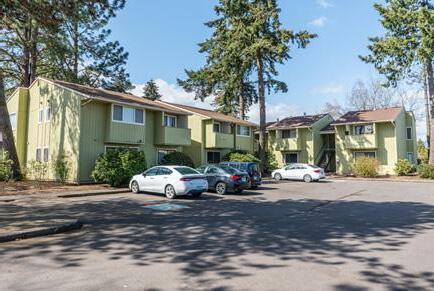
Eugene/Springfield MSA
2022: 490 (YTD Aug.) 2021: 1,058 2020: 410 2019: 304
Vacancy Rates (Q3)
Lane County 2022: 3.9% (Q3) 2021: 1.7% 2020: 3.6% 2019: 3.6%
Unemployment Rate (Q3)
Eugene/Springfield MSA
2022: 4.8% (Aug.) 2021: 3.8% 2020: 6.3% 2019: 3.1%
Eugene has recently expanded its urban growth boundary to accommodate parks, schools, and office space. The city has not passed any legislation that would provide additional protection for renters above what is required by state and federal laws, despite a persistent housing shortage.

8 HFO Investment Real Estate • www.hfore.com
HFO Sale: Sienna Pointe
168 Units in Bend, OR HFO Sale: Fountain Villa Apartments 82 Units in Eugene, OR
Medford / Jackson County
Population
Medford’s population grew 15.3% between 2010 and 2022, while Jackson County’s population grew 10.2% over the same period. Over 29.1% of Jackson County residents over the age of 25 have a bachelor’s degree or higher, and 43.2% of Medford homes are renter-occupied. The median income in Jackson County is $60,656.
Employment
The largest employers in Jackson County are Amy’s Kitchen, Asante Health System, Harry & David, Lithia Motors, Pacific Retirement Services, and Providence Health Systems.

Housing
Between August 2017 and 2022, the median home price in Jackson County increased 60.3%. As the county continues to grow, housing affordability is an increasing problem for residents. Approximately one-third of Jackson County residents spend more than 50% of their income on rent. In February 2018, the Medford City Council passed a 0.3% construction excise tax within the city limits — less than the 1% allowed in Oregon. Medford’s plan gives 15% of the funds generated to nonprofit nutrition, housing, and senior programs, 35% to low-income housing projects, and 50% to fund programs that build houses for residents making up to 120% of the area median income.
Population Medford: 86,367 (+15.3% since 2010) Jackson County: 224,008 (+10.2% since 2010)
Multifamily Permits
County
Rates (Q3)
Rate
Area
Medford/Jackson
MSA 2022: 137 (YTD Aug) 2021: 206 2020: 87 2019: 132 Vacancy
Medford 2022: 2.2% 2021: 1.5% 2020: 1.7% 2019: 2.3% Unemployment
Medford
MSA 2022: 3.9% 2021: 4.7% 2020: 6.7% 2019: 3.8%
REGIONAL ROUND-UP | OREGON Sources: CoStar; U.S. Census Bureau MULTIFAMILY NEWS MULTIFAMILY MARKETWATCH HFORE.com/podcasts.aspx or wherever you get your podcasts Join HFO Research Analyst Michael Pierce and HFO Broker Aaron Kirk Douglas for a 10-15-minute weekly podcast update on news of interest to the industry. HFO-TV HFORE.com/videos.aspx or YouTube.com/user/HFObrokers • Check out our library of hundreds of interviews on topics of interest to multifamily owners with local economists and other housing industry experts. • Let us know at service@hfore.com if there’s a topic you’d like covered or a guest you’d be interested in seeing interviewed. RECENTLY ON HFO-TV: OREGON HOUSING & COMMUNITY SERVICES 2023 LEGISLATIVE AGENDA & HISTORICALLY LARGE PROPOSED BUDGET Featuring Andrea Bell, Executive Director of Oregon Housing & Community Services RECENTLY ON MULTIFAMILY MARKETWATCH: UPDATES ON DATA AND DEBT Featuring Carl Whitaker of Real Page Analytics and Blake Hering of Gantry, Inc. HFO-TV & Multifamily Marketwatch A member of 9 The Northwest Apartment Investor
Regional Round Up | Washington
TACOMA / PIERCE COUNTY
Population Growth
Tacoma (population 220,594) is currently the third-largest city in the state. Its growth rate exceeds that of Spokane (population 232,227). If current trends continue, it could become Washington’s second-largest city.
Multifamily Construction
The U.S. Census reports that the median rent in Tacoma is $1,134, a historic high for the city. Rent per square foot has been steadily climbing over the past few years. According to CoStar, rent as of August 2022 was $1.89 per square foot — up from $1.77 a year earlier (+10.2%).
Gentrification
As of October 2022, Pierce County was one of the fastest-growing metropolitan areas in Puget Sound. The county has seen several new museums, hotels, and waterfront improvement projects, along with population increases, resulting in a 19% increase in home values this year (compared to 16% in 2021), according to the Pierce County Assessor-Treasurer’s office.
SPOKANE / SPOKANE COUNTY
Rental Rates
As of August 2022, the average rent in Spokane was $1,310, up from $1,107 (+18%) in 2020.

Job Market
Spokane has seen steady job growth over the past several years, and, according to Sperling’s best places, employment will increase 34.5.% over the next 10 years. The largest area employers are The State of Washington, Spokane Public Schools, Providence Hospital, and Fairchild Air Force Base. Spokane County is the fifthlargest aerospace cluster in the United States and home to 120 manufacturers, suppliers, and distributors.
Population Tacoma: 220,594 (+11.3% since 2010) Pierce County: 927,709 (+16.7% since 2010)
Multifamily Permits
Vacancy Rates
Pierce County 2022: 5.4% (Q3) 2021: 4.9% 2020: 7.1% 2019: 6.0%
Seattle-Tacoma MSA 2022: 12,625 (YTD Aug) 2021: 20,500 2020: 13,436 2019: 16,392 Unemployment Rate
Seattle-Tacoma MSA
2022: 3.5% (Aug) 2021: 3.5% 2020: 6.2% 2019: 3.0%
Population Spokane: 232,227 (+10.9% since 2010) County: 548,942 (+16.5% since 2010)
Multifamily Permits Spokane MSA
Vacancy Rates
Spokane County
2022: 5.5% (Q3) 2021: 4.9% 2020: 4.7% 2019: 4.4%
2022: 1,486 (YTD Aug) 2021: 1,211 2020: 1,297 2019: 1,181 Unemployment Rate
Spokane County 2022: 4.4% (Aug) 2021: 4.1% 2020: 6.8% 2019: 4.8%
10 HFO Investment Real Estate • www.hfore.com
OLYMPIA / THURSTON COUNTY
Renter Population
52.8% of households in Olympia are renter-occupied, and 46.1% of residents have a bachelor’s degree or higher.
Employers
Due to Olympia’s status as Washington’s state capital, roughly a quarter of all jobs in Olympia are in public administration. The largest private employers in Thurston County are Providence Saint Peter Hospital, Walmart, Safeway, South Puget Sound Community College, and Xerox.
Multifamily Construction
According to CoStar, Olympia is one of the fastest-growing small metros in North America. The roughly 1,200 units under construction in the area represent an increase of about 7.7% over current inventory. Over the past decade, 3,500 new units were delivered. The vacancy rate in Olympia was 4.8% as of Q3 2022.
Population Olympia: 56,234 (+18% since 2010)
Thurston County: 299,097 (+17.8% since 2010)
Multifamily Permits
Olympia-Lacey-Tumwater MSA
Vacancy Rates
2022: 4.7% (Q3) 2021: 2.8% 2020: 3.9% 2019: 5.7%
2022: 675 (YTD Aug) 2021:1220 2020: 379 2019: 846 Unemployment Rate (Q3)
Thurston County 2022: 4.4% (Aug) 2021: 3.8% 2020: 6.3% 2019: 4.2%
TRI-CITIES / BENTON & FRANKLIN COUNTIES
Population Growth
The Tri-Cities area population has grown 62% since the year 2000.

Employment Growth
The Tri-Cities area is home to significant employers in the scientific community, including Battelle/Pacific Northwest National Laboratory and CH2M, along with large utilities, medical centers, school districts, and food processors. According to the Tri-City Development Council, 82.8% of the metro area population has a high school, college, or graduate degree, and there are more scientists and engineers per capita in the area than anywhere else in the nation. According to ZipRecruiter, the average hourly wage in the Tri-Cities area is $24.
Population MSA: 310,986 (+23% since 2010)
Multifamily Permits
Kennewick-Richland
Vacancy Rates
Benton | Franklin County
2022: 4.8% (Q3) 2021: 3.9% 2020: 2.7% 2019: 4.6%
2022: 429 (YTD Aug) 2021: 116 2020: 190 2019:708 Unemployment Rate (Q3)
Kennewick-Richland-Pasco Area
2022: 4.8% (Aug) 2021: 5.0% 2020: 7.2% 2019:5.7%
Sources: CoStar; U.S. Census Bureau
11 The Northwest Apartment Investor
Federal Bills Related to Housing | 2022
By Michael Pierce, HFO Investment Real Estate Research Analyst
Federal
H.R.5376 – Inflation Reduction Act of 2022

The Inflation Reduction Act of 2022 (IRA) was signed into law on August 16, 2022. The $740 billion act includes provisions that may affect the rental housing industry. The final bill did not change the taxation of carried interest. The language in the originally proposed bill would have negatively impacted the multifamily industry by requiring that an asset be held for three years before it could qualify for carried interest treatment.
OTHER KEY HIGHLIGHTS:
Energy-Efficient Commercial Buildings Deduction
The package includes a base credit for properties placed in service in 2023 of $0.50 per square foot in energy savings for buildings with four or more stories that exceed 25% of ASHRAE standards in effect three years before a building is placed in service.
New Energy Efficient Home Credit
The act extends the New Energy Efficient Home Credit through 2032 (which, under current law, applies to buildings of three or fewer stories but after 2022 would apply to all buildings meeting the requirements of the ENERGY STAR Multifamily New Construction Program). For multifamily units acquired after 2022, a base credit of $500 is provided for units that participate in the ENERGY STAR Multifamily New Construction Program while meeting both national and regional program requirements.
Building Codes
The package allocates $330 million in grants to
help states adopt the most recent residential and commercial building energy codes, International Energy Conservation Code ASHRAE Standard 90.1-2019, or codes achieving equal or greater energy savings. In addition, it provides state and local governments $670 million to adopt building codes that meet or exceed the zero-energy provisions in the 2021 IECC.
Infrastructure
The package includes $837.5 million for the U.S. Department of Housing and Urban Development (HUD) to provide grants or loans to affordable housing owners that implement the following: energy or water efficiency; indoor air quality or sustainability; zero-emission electricity generation or low-emission building materials or processes; energy storage; building electrification; and climate resilience.
Energy Rebates
The IRA includes $4.3 billion for states to create programs to offer Home Owner Managing Energy Savings (HOMES) rebates. A portion of these funds will be available for owners of multifamily properties to retrofit their units or buildings. A property may be eligible for $2,000 per unit if the project achieves at least 20% modeled energy savings up to $200,000 and $4,000 per unit if the project achieves at least 35% modeled energy savings up to $400,000. For low- and moderate-income buildings, these figures jump to $4,000 and $8,000 per unit, respectively.
Extension of Excess Business Loss Limitation
Extends for two years (through 2028) a provision limiting excess business losses set to expire at the end of 2026.
12 HFO Investment Real Estate • www.hfore.com
Given the outcome of the 2022 elections and democrat Tina Kotek being voted in as governor, we expect increased pressure and more landlordtenant laws in the next session, though not having a supermajority in Oregon will hopefully lead to more balanced legislation.
S.B.1536
- Emergency Heat Relief Bill
Amends the Oregon Residential Landlord Tenant Act to limit restrictions on renter use of portable cooling devices from May to September of each year. It also requires that housing providers provide cooling devices in new construction.
Oregon
S.B.
608 – Rent Control (passed in 2019)
On September 13th, Oregon’s Office of Economic Analysis announced the maximum rent increase rate for 2023 to be 14.6%.
S.B.5593
Washington
– Concerning Urban Growth Area Boundaries
Amends the current standards for jurisdictions to revise a designated urban growth area (UGA) or areas to include revisions based on existing patterns of development.
S.B.5722 – Reducing Greenhouse Gas Emissions in Buildings
Changes energy updates for commercial buildings and adds economic impact statement.
H.B.1430
– Concerning the Duration of State Upland Leases
Extends state leases to 99 years to allow for more housing construction.
H.B.1717
– Tribal Consultation in GMA Planning
Creates process for cities and counties to enter into agreements with federally recognized tribes regarding tribal consultation over GMA planning.
H.B.1738
– Housing Finance Commission Debt
Increases the Housing Finance Commission’s debt limit from $8 billion to $14 billion.
H.B.1241
- GMA Planning Timelines
Changes GMA planning cycle from eight years to 10 years and adds a mid-point five-year progress report; extends the deadline for the 2024 update cycle (King, Kitsap, Pierce, and Snohomish counties) by six months.
S.B.5749 – Local Areas of More Intense Rural Development Areas
Allows development within a Local Areas of More Intense Rural Development (LAMIRD) location if providers of utilities confirm that there is sufficient capacity to serve new or increased demand. Commercial development must be primarily designed to serve the needs of rural populations.
S.B.5749 – Landlords Accept Non-Electronic Forms of Rental Payments
Requiring that landlords accept non-electronic forms of payment to alleviate a common challenge for many renters, better ensure that landlords receive rent payments on time, and reduce barriers to renting as the state focuses on transitioning community members out of homelessness.
S.B.5042 – Concerning the Effective Date of Certain Actions Taken Under the Growth Management Act
Closes a loophole in the Growth Management Act (GMA) that previously allowed for growth in rural landscapes that do not comply with the GMA. SB 5042 ensures that new development will stay concentrated in designated urban growth areas — places where homes are easily connected with transit, jobs, and public services.

13 The Northwest Apartment Investor
Check out our HFO-TV episode on the bill
Clark County’s Economy: Recovered and Then some
By Scott Bailey, Regional Economist, Washington Employment Security Department

Like the rest of the nation, Clark County’s economy suffered a major shock when COVID-19 hit in March and April 2020, followed by a sharp but partial recovery, with GDP rebounding, personal income and retail sales soaring, and roughly half of the job loss made up in only a few months.
Beginning in 2021, recovery accelerated in Clark County. Employment in September 2022, for example, was 7.1% higher than before the pandemic. This was better than any other county in the state. In comparison, national employment was up 0.3%; Washington state, +1.2%; Oregon, +0.1%; the Portland metro area, +0.5%; and the Seattle metro, +0.1%. If you factor in population growth, Clark County has fully recovered in terms of total jobs, while other areas were still in a deficit.
Most, but not all, major sectors in the county were back to “normal.” The two exceptions: arts, entertainment, and recreation (which includes performing arts, museums, bowling alleys, gambling establishments, and the like) was still over 500 jobs below pre-pandemic levels, and state and local government payrolls were down by a combined 600 jobs. These sectors were also lagging at the national level. A more detailed look reveals that employment was still off by 10% in two key industries for families: nursing homes and childcare.
A more positive note: Manufacturing has fully recovered nationally (+1.1%), as the industrial production index hit a record high in September 2022 despite ongoing supply chain issues. Manufacturing was doing even better in Clark County, with payrolls up 3.8%. And another: professional services employment has risen 9.2% nationally and an eye-popping 27.6% in Clark County. This is a high-wage industry and includes services like computer systems design, research and development, engineering, accounting, and law.
Finally: Unlike the nation, employment in accommodations and food services (hotels and
restaurants) has exceeded pre-COVID levels by a hefty 9.1%. A new hotel just opened on the Vancouver waterfront and another will be opening in the coming months. The latest available data (from the first quarter of 2022) showed restaurant sales at 6% above prepandemic levels and hotel/motel sales off by 10%.
Taxable sales at retail establishments soared in the first year of the pandemic for two reasons. First, stimulus programs minimized the impact on household incomes and protected many businesses as well. Second, consumers shifted purchasing from services to goods bought at local stores and increasingly online. Spending peaked in the second quarter of 2021 and then dropped slightly and showed little change in the next two quarters. This was not surprising — as COVID-19 regulations evolved, spending patterns started to revert to normal. The effects of the stimulus programs on incomes, with a few exceptions, were largely over by the beginning of 2022, also likely affecting purchasing.
Housing construction was strong and held up well during the pandemic. The past three years (2019-2021) were the fifth, third, and highest-ranking years for total housing permits issued. Through September, permits issued were at substantially lower levels, making 2022 look more like a decent but far from record-breaking year. Despite all of the new construction, the housing shortage remained in effect, and rents kept rising. The percentage of tenants who were rent-burdened (over 30% of income going to rent) rose from 46% in 2016 to 51% in 2021. Those who were severely rent-burdened (half or more of income going to rent) increased from 21% to almost 25%.
Throughout the pandemic, national data has shown that the African American, Indigenous, Latino, and Pacific Islander populations have been disproportionately affected by COVID, both medically and economically. Nationally, African American women and Latinas in particular had sharply higher job losses and slower recoveries compared to others. At the
14 HFO Investment Real Estate • www.hfore.com
county level, with somewhat less detail available, job loss was deeper for African Americans and Indigenous workers than for White non-Latino workers, but reductions were proportionately smaller for Asian Americans, Latinos, and Pacific Islanders. The recovery was harder to assess because we don’t have the underlying population numbers, but it appears that most demographic groups had a strong employment recovery, with the exception of Native Americans.
What’s ahead for 2023 is anybody’s guess. In part, it depends on what the Federal Reserve Bank does next in its battle against inflation (which dropped to an annualized rate of 4.9% in October as this article went to press). Whether the Fed continues to raise interest rates and how quickly it unwinds its asset purchases (qualitative tightening) will of course have a major impact on the direction of the economy.
Unfortunately, the Fed does not have the tools to combat the major source of price increases: the 40% to 60% increase in corporate profits (depending on which measure of profits you use) since the pandemic began. The number of products and services in the U.S. controlled by a handful of businesses has grown enormously over the pasts few decades, and in the past two years, corporations have certainly exercised their pricing power. There appears to be growing
HFO Sale: Hill Villa Apartments
63 Units in Vancouver, WA
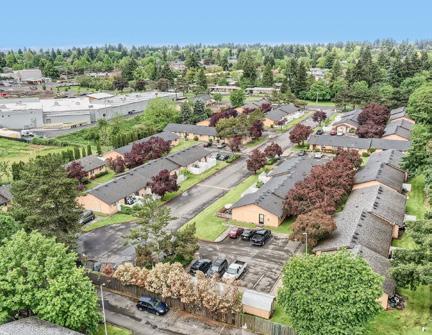
bipartisan interest in Washington D.C. in responding to monopolies and proposed mergers that lead to greater concentration in industries. That will be an important issue over the long term.
The most important issue for 2023, and for many years to come, will be how we respond to climate change.
In some ways, almost everything else is just noise.
Scott Bailey can be reached by email at scott.bailey@ESD. wa.gov or phone at (360) 810-0048.
HFO Hires New Marketing Director
In 2022, longtime HFO Marketing Director Aaron Kirk Douglas decided to employ his 17 years of experience managing the company’s marketing efforts to take on a new challenge as a commercial broker. Aaron remains involved in our marketing efforts, but now you’ll see him in front of the camera or behind the mic, hosting episodes of HFO-TV and a bi-weekly Washingtonfocused version of the Multifamily Marketwatch podcast.
In April 2022, Julie Eng picked up where Aaron left off. Julie joined HFO most recently from Portland-based Fairway America, where she managed content marketing. Prior to that, she spent seven years building and then leading the marketing and communications team at multifamilyfocused Hamilton Zanze Real Estate Investments in San Francisco.

“Julie’s background in various areas of marketing and communications will be an asset to HFO as we continue to grow,” said HFO founding partner Greg Frick. “Her specialized expertise in multifamily real estate marketing will help us to reach more apartment buyers and sellers in the Pacific Northwest.”
Prior to working at Hamilton Zanze, Eng worked in journalism and advertising. She earned a Bachelor of Arts degree from the University of California, Santa Cruz.
Julie Eng Director of Marketing
15 The Northwest Apartment Investor
COVID Emergency Orders End, Tenant Protections Remain… With More Coming
By Ryan Makinster, Director of Government Affairs for the Washington Multi-Family Housing Association

On October 31st, both the Washington State and Seattle COVID emergency orders ended. However, many of the tenant protections adopted during the pandemic remain in place. At the local level, tenant advocates continue to push for increasingly onerous “protections,” many of which have been successfully adopted, much to the chagrin of the multifamily industry.
While the emergency orders have concluded, housing providers must still abide by several pandemicrelated provisions. At the state level, these include the requirement for housing providers to offer payment plans for past rent due and the Eviction Resolution Pilot Program (ERPP).
Separate from ERPP, the requirement to allow payment plans for back rent accrued during the pandemic ends on April 30, 2023. The program mandates housing providers to negotiate a payment plan with tenants who have fallen behind on rent during the declared emergency.
Although associated with the emergency order and Covid protections, the ERPP was adopted independently of the emergency order and has a sunset date of June 30, 2023. Housing providers must go through the ERPP prior to filing an unlawful detainer on residents who have not paid rent. Originally envisioned as a potential alternative to evictions and supported by industry advocates as a good compromise to help address non-payment issues prior to eviction, the program has not met intended goals or benchmarks. In addition to delaying housing providers’ access to the courts in a timely matter for eviction proceedings, the success of the program also seems to be in question. According to housing providers, mediators are accepting negotiated payment plans that the tenant has no way to financially comply with. When the tenant ultimately defaults on the payment plan, they again return to the mediation process to negotiate a new plan, further delaying resolution and increasing the financial liability to housing providers. Many providers note that these tenants will likely never be able to repay the liability.
Seattle’s COVID emergency declaration had two provisions tied to the order. The first requires landlords to cap repayment installments at one-third of the tenant’s rent, offer a “reasonable schedule” for the tenant to pay back what rent they owe, and expand the window of protection until six months after the end of the declaration, April 30, 2023. The second is a prohibition of late fees or other charges associated with non-payment of rent during and for one year after the mayor’s civil emergency period, which puts the end date at October 31, 2023.
In addition to these temporary orders, many were adopted in perpetuity under the guise of pandemic protections and will continue while advocates push for more.
16 HFO Investment Real Estate • www.hfore.com
In Good Faith
In 2019, the Washington Multi-Family Housing Association (WMFHA) and others in the industry worked with tenant advocates, the legislature, and others to address concerns regarding notice of rent increases, extending the statutory requirement of rent increases from 30 to 60 days. At the time, it was understood that offering only 30-day notice was causing hardship for some tenants who chose to seek new housing due to the increase. In the spirit of compromise and to help those that would have been impacted, WMFHA and others agreed to the 60-day notice included in the legislation.
Unfortunately, although the industry negotiated the compromise in good faith, tenant advocates who were unable to get their extreme agenda passed at the state level are now pushing much longer notification requirements in local jurisdictions, along with a long list of onerous mandates, restrictions, and requirements.
Rent Control by Another Name
Unable to pass local rent control due to the state preemption contained in RCW 35.21.830, tenant advocates have started pressuring local jurisdictions to enact a laundry list of “tenant protections.” Several jurisdictions have adopted these provisions with little to no industry or stakeholder engagement. The new regulations include extended notice for rent increases, limits on move-in fees, limits on late charges, prohibitions on the use of social security numbers for tenant screening, and more.
Many of these efforts have been championed by A Regional Housing Coalition (ARCH), and some or all of these “protections” have been adopted in Seattle, Unincorporated King County, Kenmore, Redmond, Kirkland, Olympia Issaquah, Port Townsend, and Burien, with other cities currently under consideration.
Although not universally adopted or the same in every jurisdiction, these protections are generally:
Rent Increase Notification (ARCH Proposal)
• 120 days for an increase over 3%
• 180 days for an increase over 10%
Move-in
Fees (ARCH Proposal)
• Capped at one-month rent with the right to pay in installments over six months (or two months for leases shorter than six months)
Late Fees (ARCH Proposal)
• Capped at a percentage of monthly rent (usually 1.5%) or a flat rate ($10)
Rent Due Date Allowable Change
• Allows tenants to change the due date of rent from a contractually obligated date in the lease to a date more convenient based on when they receive a source of income (usually fixed income or government assistance)
No SSN Required for Tenant Screening
• Housing providers may ask for Social Security numbers during the application process but are prohibited from requiring them.
Although uncommon, some cities have taken these provisions further. Burien, for example, allows tenants to break their lease at any time after a rent increase notification and only be liable for rent until the day they relinquish the property. Assuming a six-month rent increase notification, housing providers’ one-year leases have effectively become six-month leases.
The Wrong Answer
It seems antithetical for an organization like ARCH, whose mission is “to preserve and increase the supply of housing for low- and moderate-income households in East King County,” to push legislation that will only serve to increase the cost of business, thereby increasing rent in the long term, while also stifling incentives to add new multifamily units to the marketplace.
Washington state, and more specifically western Washington, has a housing crisis created by lack of supply. Rather than address the root cause of the issue created by past policy decisions, advocates and their elected “allies” are instead pushing policies that will only exacerbate the crisis now and long into the future.
According to a recent study conducted by Up for Growth, Washington has underproduced over 140,000 homes since 2012. In order to keep up with current and future demand, the state has also projected we will need to add almost one million homes by 2050 to address the current deficit, which continues to increase each year.
We cannot address either the housing availability or affordability crises by increasing the cost of doing business and disincentivizing production of the units we so desperately need.
For a spreadsheet of current tenant protections by jurisdiction or more information, please email Ryan Makinster, Director of Government Affairs at WMFHA, ryan@wmfha.org.
17 The Northwest Apartment Investor
Interview with Washington Lieutenant Governor Denny Heck

Washington’s number-one barrier to economic growth is housing. It is a top-tier issue for the state’s 2023 legislature. They will act.
The latest report on Washington’s housing needs said between 2012 and 2019, the underproduction in the state totaled 140,000 units. Are there other numbers you’ve heard?
It’s a hard area to count. But to the degree that our science and our methodology are getting better, we know it’s at least 140,000 to 150,000 households who do not have housing of their own that would like to have it. That’s pretty significant, even in a state the size of Washington, which is closing in on eight million people.
Industry experts see challenges in addressing the shortfall, and they’re hoping to make some of those changes in zoning codes. Is that happening in Washington?
No, but there have been multiple efforts to do so, and that element of increasing supply will definitely be a part of the debate that will rage in the January 2023 session of the Washington legislature.
Do you know what some of those efforts might entail?
To distill it down, most of these efforts are known by the moniker of Missing Middle Housing. And what they attempt to do is either incent or compel local municipalities to in effect, sometimes with certain conditions, move away from single-family zoning to allow for more density to increase supply. And this can take a whole bunch of forms, from more liberal laws relating to the addition of accessory dwelling units
But look, we have a serious housing supply problem. In fact, I would characterize it as a housing crisis in this country, definitely in Washington state, which, by the way, has the worst housing supply problem in the country. If you take the average number of housing units per household, in the country, it’s 1.14. In Washington state it’s 1.06. That is the lowest in the United States. We’re really feeling this in Washington state. And of course, because God has not repealed the law of supply and demand, that means home prices are up, up, up, up.
Is there anything that the state can do about permit times and inspection lags?
Should, and I hope, will. There will be several permitting reform proposals in the January 2023 session. The Greater Seattle/Central Puget Sound is the fourth most regulated in the country in terms of gaining permits. We know the time it takes to get permits adds cost to construction and housing units, sometimes so much time that construction isn’t undertaken. We know that permitting reform is an important part of this. But here’s the deal: the provision of housing units is a complex, threedimensional ecosystem. And we can point to any one of these things, but we have to understand we probably need to do all of these things. We need zoning reform, we need permitting reform, we need to make sure we have available land on which to
As Interviewed by HFO broker Aaron Kirk Douglas Answers have been edited for brevity. Visit HFORE.com/blog.aspx for the full interview.
Lt. Gov. Denny Heck (ADUs) [to] creating duplexes, triplexes, or quadplexes in certain areas.
18 HFO Investment Real Estate • www.hfore.com
build, we need to be paying attention to the available supply of labor. Because we know that homebuilders in particular are having a hard time finding people to drive hammers and pound nails. It’s all of these things that have to be looked at. And you can’t look at just one without looking at the other.
Is there anything that can be done to educate the public at large to get them to accept the fact that everyone needs to have more housing shelter in their neighborhoods?
I think the good news here is that we’re really beginning to make some progress. There is a considerable NIMBY movement afoot on a decentralized basis. But you know what else is being stood up? Beginning to get some fuel in the gas tank? YIMBYism: Yes, In My Backyard –people who see it just the opposite ... And one of the things I think is important to point out here is that a lot of NIMBYism is based on the ill-conceived premise that if you “change the character of my neighborhood,” then my home value is going to be hurt. That’s not what the research says, at all. And as more people become more aware of that, I think we knock out one of the legs under the stool of people who are just obstructing progress.
What is the state of Washington doing to encourage more housing development?


Our most recent legislature appropriated $825 million to attack this issue. It was for all manner of things, mostly focused on the affordable housing side of the income strata ... And included in that $825 million was sufficient funds to build 2,000 affordable units. It was a great step forward, a higher commitment than ever. But, as I pointed out to them, to their chagrin, if we did that every year, for 70 years, we might get even,
because at 2,000 units a year, we’re not beginning to touch it. That’s why this is going to require an all-of-theabove effort by local, state, and federal governments and the private sector.
The public sector cannot appropriate sufficient supplies for us to build our way out of this ... The reality is, we need to build more homes of all kinds for all our neighbors, because, as I said earlier, this is an ecosystem. We’re not building very many starter homes. There’s a lot of competition for what we have, and Boomers like me are downsizing. And you have some people that want to buy that first home, get that first rung on the ladder, and we’re not building them. So what does that cause to happen?
Because people stay renting, occupancies go up. If occupancies go up, rents go up, if rents go up, more people become cost burdened. And what happens? You have more homelessness. So, this is an ecosystem, and we need to look at it in terms of overall supply, but with our highest emphasis, I think, on affordable housing.
Do you know of any specific housing bills that will be brought to the forefront in the next legislative session?
Yes. And the line forms around the corner. I’ve been around this process for 50 years now. For the first time in a half-century, I can say with relative confidence that the issue of housing writ large will be a top-tier issue before the legislature. They will act. They will act along a variety of fronts. Whether or not it will make a material difference and an impact is to be determined.
Aaron Kirk Douglas is a broker focused on the Washington market. You can reach Aaron at aaron@hfore.com
HFO Sale: Garden View 48 Units in Vancouver, WA
19 The Northwest Apartment Investor
HFO Sale: Anderson Estates 37 Units in Vancouver, WA
Oregon Economic Update: Recession on the Mind
By Amy Vander Vliet, Metro Region Economist , State of Oregon Employment Department
DOOR #1: BASELINE SCENARIO (NO RECESSION)
OEA’s baseline, or most probable, outlook is that the Federal Reserve will be able to engineer a soft landing: raising interest rates enough to tame inflation, yet not so much as to cause a recession.
The risk of a recession is increasing as the probability of a soft landing fades. Inflation has proven to be more persistent than expected and has broadened its reach beyond goods into the services sector. Yet at the same time, employers are still adding jobs, and industrial production continues to trend up. Personal income and spending are also on the rise, although barely outpacing inflation. The economy is at a crossroads, and the latest forecast from Oregon’s Office of Economic Analysis (OEA) acknowledges it could go either way: continuing but slowing growth, or a full-fledged recession.
Consumers spent throughout the pandemic, aided initially by fiscal policy (e.g., enhanced unemployment insurance benefits, the Paycheck Protection Program) and then by rising incomes and equities. However, they spent more on goods (e.g., new appliances, exercise equipment) and less on services (e.g., travel, restaurants). This sudden shift contributed to overloaded supply chains, which, in turn, led to higher prices. OEA believes that going forward, consumers will continue to spend but shift away from buying goods and back towards services — more in line with pre-pandemic habits. Supply chains are already easing, and this shift in behavior will further alleviate issues and thus, inflationary pressures.
If this scenario plays out, the nation and Oregon will avoid a recession and continue to add jobs. But with interest rates already high, consumer and business spending will slow. Consequently, employment growth will decelerate in the near term, and the unemployment rate will tick up to 4.6% by late 2024 from its current near-historic low of 3.7%.
DOOR #2: ALTERNATE SCENARIO (RECESSION)
Given the increasing downside risks, OEA developed an alternate outlook in their latest forecast that incorporates a recession. The scenario here is that inflation is more persistent and entrenched than expected, and consequently, the Federal Reserve raises interest rates higher, aiming for price stability at the expense of job growth. It will take a year or more for today’s rate hikes to work through the economy, given the lag in policy and current strong household balance sheets. By late 2023, the economy slips into a recession. OEA expects it to be relatively mild and short, with Oregon losing 57,000 jobs, or 2.9%; significantly less than the dot-com and housing recessions. The 2023-2024 recession in Oregon will be more volatile than the nation as a whole given our industry structure and reliance on in-migration. Growth resumes in 2025.
These are just two scenarios among many possibilities, known and unknown. Inflation is the key issue, and its depth and breadth going forward are difficult, if not impossible, to predict.
For more analysis and updates from OEA, check out their blog at www. oregoneconomicanalysis.com/
The OEA’s complete report is available at www.oregon.gov/das/OEA/ Pages/forecastecorev.aspx
Source: Oregon Employment Department, Bureau of Labor Statistics, and Office of Economic Analysis OREGON EMPLOYMENT FORECAST: BASELINE AND ALTERNATE SCENARIOS 2018 2019 2023 2020 2024 2021 2025 2022 2026 2027 1.9 2.1 1.8 2.0 1.7 In Millions Forecast Baseline Scenario (no recession) Alternate Scenario (recession) 20 HFO Investment Real Estate • www.hfore.com
The Bridge to 2023 – Trust Experience, Embrace Opportunity
By Blake Hering, Principal, Gantry
There is no doubt that we are in a shifting market climate, with significant headwinds emerging in 2022 that will carry into 2023. That being said, for many of us who have weathered a storm or two during our careers, these are not entirely unchartered waters. All cycle shifts have their own root causes, but we have been here before. Headwinds are not currently at gale force, and in several ways, real estate remains the haven for smart money. It’s important to remember that when markets are turbulent, people still get profitable deals done. Take heart. In today’s market, there is no shortage of debt capital at pricing that remains conducive to transacting efficiently.
So, when times are uncertain, my best suggestion is to keep it simple. The key to optimizing investments in a volatile market is to acknowledge the pertinent realities and transact accordingly. Find that right person with capital markets expertise to help analyze and structure the right solution for your specific investments. Whether that’s me or someone else, you want to find the person who can see the entire landscape for what it is and help you to properly assess risk to match your return objectives.
2022 10-YEAR U.S. TREASURY RATE
The question many are asking is, how do you properly assess risk to achieve a viable return in this climate? Our correspondent life company lenders are still pricing long-term debt at attractive rates. This is extremely relevant for those concerned with rate volatility as life companies lock rates at the time of application, often many months in advance of funding. Life company long-term debt is pricing well below shorter-term alternatives. Other capital sources also remain potentially viable funding options, with agencies, regional banks, and credit unions actively competing for loans. We can also structure loans with amenable early exit clauses to offer additional flexibility.
5.00%
Jan
Apr Feb
4.00% 2.00% 1.00% 0.0% Jul
3.00% Aug Jun May Mar Sept Oct Nov
Multifamily market fundamentals remain sound. Supply and demand are in proper balance in most markets, and performance of most assets remains stable. In fact, many markets remain undersupplied. At Gantry, our $18 billion servicing portfolio of loans is performing at 100% post-COVID. That is a telling statistic for the strength of real estate in the current cycle. Gantry does business with more than 144 lenders and capital sources, has already placed $4.0 billion of loans through Q3 2022, and we are already in early talks for transacting at amenable terms in 2023.
21 The Northwest Apartment Investor
A Guide to Oregon’s Big Parking Reform
By Catie Gould, Researcher, Sightline Institute

The new year will present more opportunities for multifamily housing construction in Oregon, thanks to a major rollback of local minimum parking requirements across the state. Starting on January 1st, developers will gain the flexibility in 51 Oregon cities and counties to determine what parking ratio is appropriate for their unique project.
Many of these reforms to parking mandates, the farthest-reaching in modern U.S. history, are set to take effect on January 1st whether or not the affected jurisdictions have updated local zoning codes to reflect them.
The new rules, adopted by the state Land Conservation and Development Commission (LCDC) in July, included a broad range of land use and transportation planning regulations to legalize more climate-friendly development if people want to build it.
The change will prevent situations like a recent case in Troutdale, where an affordable housing developer has been blocked from adding 94 new housing units to the area. Despite presenting parking demand studies of five similar developments nearby, the city denied their request to lower the multifamily parking requirement from two parking spots per unit to 1.4 spaces. A redesign to accommodate more surface parking was estimated to add $500,000 and a three-tofour-month delay to the project. That same project will be legal in January when the first phase of the parkingrelated rules goes into effect. More changes to parking regulations will be coming through June 2023, absent extensions approved by the LCDC.
The state rules will apply within the borders of the
state’s eight Metropolitan Planning Organizations, including urbanized parts of Clackamas, Marion, and Washington counties, comprising two-thirds of Oregon’s population. A few places in Oregon, like the Tigard Triangle and downtown Salem and Eugene, have already lifted parking requirements in an effort to attract more development. The Tigard area has welcomed several mixed-use projects to the area since loosening its zoning code and striking parking requirements in 2017.
CHANGES EFFECTIVE JANUARY
2023
Development applications submitted after Dec 31st, 2022, will no longer be required to provide off-street parking in the following instances:
• Residential units smaller than 750 square feet
• Regulated affordable and publicly supported housing
• Single-room-occupancy housing
• All development within 0.5 miles of a frequent transit corridor with service every 15 minutes during peak hour, or in cities with less transit frequency: transit corridors with service once per hour at peak.
• All development within 0.25 miles of a rail transit stop.
• Other equity-related uses including childcare facilities, housing for people with disabilities, and emergency shelters.
Additionally, local jurisdictions will be prohibited from requiring more than one parking space per unit for any multifamily development on a single lot, regardless of other factors.
OUTLOOK FOR THE REST OF 2023
The rules have other provisions that will ensure new parking lots are ready to adapt to climate change and a transition to electric vehicles. By April 1, 2023,
22 HFO Investment Real Estate • www.hfore.com
multifamily buildings with five or more units will need to provide an electrical conduit to serve at least 40% of any off-street parking spaces built (up from 20% today).
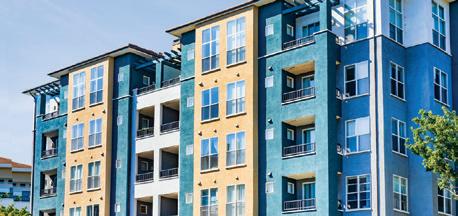
Cities have three options to comply with the full suite of parking regulations by June 30, 2023. Some will likely choose the first option — eliminating parking requirements citywide — which is the simplest to implement.
In cities that do choose to retain off-street parking requirements in more situations, off-street parking will be required to be unbundled from rent for multifamily buildings near frequent transit, or in designated climate-friendly areas.
Regardless of the jurisdiction, new surface parking lots larger than a quarter acre will also be subject to requirements for tree coverage or solar panels somewhere on the property after June 30th, with an option to pay an in-lieu-of fee.
LEGAL CHALLENGES AHEAD
The election of Tina Kotek as Oregon’s next governor makes it highly unlikely the rules will be reversed by the next administration, though it is possible the state legislature could undo parts of the rules through legislation. Fourteen jurisdictions have jointly filed a lawsuit against the state, claiming that LCDC overstepped its statutory authority. Unless a stay of the rules is granted while the lawsuit awaits judicial review, implementation is still moving forward as scheduled. If a developer thinks their permit was illegally denied over parking, they can appeal to the Land Use Board of Appeals.
Oregon Measure 49 may also offer some financial compensation to any property owners whose residentially zoned land falls in value as a result of these rules or would fall in value as a result of their potential future reversal. Making such a claim to the state relies on having a written appraisal of the property’s value one year before a regulatory change might take effect. The appraisal must show that the regulatory change reduced the property’s fair market value if developed to its “highest and best use.”
For more information, visit www.oregon.gov/lcd/CL/Pages/CFEC.aspx
First American Exchange Company, LLC, a Qualified Intermediary, is not a financial or real estate broker, agent or salesperson, and is precluded from giving financial, real estate, tax or legal advice. Consult with your financial, real estate, tax or legal advisor about your specific circumstances. First American Exchange Company, LLC makes no express or implied warranty respecting the information presented and assumes no responsibility for errors or omissions. First American, the eagle logo, First American Exchange Company, LLC, and firstam.com are registered trademarks or trademarks of First American Financial Corporation and/or its affiliates. ©2022 First American Financial Corporation and/or its affiliates. All rights reserved. NYSE: FAF

Catie Gould can be reached at catie@sightline.org or by phone at 206-447-1880 extension 123. 1031 Exchange Services by an Industry Leader Have 1031 questions? Our experts have the answers! 844.414.1031 | FIRSTEXCHANGE.COM 23 The Northwest Apartment Investor
Can I Use My Exchange Funds to Pay for Loan Fees and Development Costs?
There has been a lot of development activity recently, and investors who are doing an exchange and planning development on the replacement property might want to use exchange funds to pay some of those costs. In addition, investors who are borrowing money to acquire property may want to use exchange funds to pay loan fees. There are two completely separate issues to focus on when deciding to use exchange funds to pay costs and expenses related to the relinquished or replacement property.
CONSTRUCTIVE RECEIPT OF FUNDS
To create a valid exchange, the proceeds from the sale of the relinquished property have to go directly from the closing to the exchange intermediary. Once the intermediary has the exchange funds, the taxpayer can’t use the money, pledge it or benefit from the money. In addition, the funds can be used only to acquire the replacement property and pay certain expenses.
The 1031 regulations say that exchange funds can be used to pay “transactional items” that relate to the sale or the purchase and appear pursuant to local custom on the closing statement as the responsibility of a buyer or seller. Accordingly, depending on the local customs, these expenses that are typically shown on a closing statement can include broker’s commissions, exchange fees, title fees, transfer taxes, and recording fees.
In most areas of the country, development costs such as architectural and entitlement fees are not paid at the closing or shown on the closing statement, and therefore should not be paid with exchange funds. Another example of this is rate lock-in fees paid to a lender since they are paid prior to rather than at a closing.
If exchange funds are used to pay for something other than the purchase price or transactional expenses that are typically paid at the closing, these rules are violated, and it has the potential to ruin the entire exchange.
 Advertorial
Advertorial
24 HFO Investment Real Estate • www.hfore.com
First American Exchange Company
EXCHANGE EXPENSES
Provided that you only use exchange funds to pay for the purchase price or transactional expenses that are typically paid at the closing, there is another issue to pay attention to. Certain expenses can be paid for with exchange funds, but they will cause the exchange to be partially taxable.
For example, if a seller gives a buyer a credit against the purchase price for prepaid rent and security deposits, it won’t invalidate the exchange but will make it partially taxable, because the seller is really using exchange funds to pay for these costs, which are not exchange expenses. In addition, there are some loan fees that are typically paid at closing, so using exchange funds won’t invalidate the exchange, but they may be considered costs of the loan rather than exchange expenses. That would result in the transaction being partially taxable.
HFO Sale: The Nash 180 Units in Gresham, OR



49
CONCLUSION
In most areas of the country, development fees are not paid at the closing and therefore should not be paid with exchange funds. Loan fees that are typically paid at the closing can be paid with exchange funds, but doing so may make the exchange partially taxable. The one exception to being able to use exchange funds to pay loan fees is a rate lock-in fee, which is typically paid before a closing and therefore should not be paid with exchange money. It is a good idea to discuss these issues with your tax advisor and with First American Exchange prior to closing on the relinquished property. Planning will ensure that you have a valid exchange and adequate funds outside of the exchange to pay expenses.
Toija Beutler 844.414.1031
tbeutler@firstam.com
First American Exchange Company, LLC, a Qualified Intermediary, is not a financial or real estate broker, agent or salesperson, and is precluded from giving financial, real estate, tax or legal advice. Consult with your financial, real estate, tax or legal advisor about your specific circumstances. First American Exchange Company, LLC makes no express or implied warranty respecting the information presented and assumes no responsibility for errors or omissions. First American, the eagle logo, and First American Exchange Company are registered trademarks or trademarks of First American Financial Corporation and/or its affiliates.
HFO Sale: The Huntley 62 Units in Beaverton, OR
HFO Sale: Sherman Oaks Apartments
Units in Albany, OR
25 The Northwest Apartment Investor
Local Contracting Company Recognized for Top Projects and Workplace in 2022
Construction and restoration projects of any kind require the expertise of tenured, respected contractors who know how to get the job done right. All too often, however, clients are forced to hire multiple subcontractors to handle various parts of their projects, leading to extended timelines and higher costs. For clients in multi-family, HOA, commercial, assisted living, and hospitality looking for a quality company that offers a full range of services under one roof, J.R. Johnson, LLC is it.
Based in Portland, Oregon, the company provides various contracting services with a promise of excellence on every job. In 2022, J.R. Johnson was awarded several titles proving the company’s promise.
In 2022, J.R. Johnson was honored to be recognized among The Oregonian’s list of the top employers in the “Midsize Employers (100499 employees)” category.
“Both our clients and employees know that when it comes to J.R. Johnson, LLC, they are going to be teamed with the industry’s most qualified, skilled, and committed professionals, who are going to put them and their needs first. Over 50 years of doing business in the Portland-SW Washington market is proof of that,” Del Starr, President of J.R. Johnson, LLC, told The Oregonian.
The Daily Journal of Commerce also awarded J.R. Johnson the Best of Architecture – Engineering – Construction (AEC) 2022 award in multiple categories:
• Restoration Company
• Remediation Company

• Painting Company
• Commercial Cleaning
• Abatement Company
Orchard Plaza

Advertorial
The Daily Journal of Commerce named 84 finalists for the 2022 TopProjects awards competition recognizing the most outstanding projects completed last year in Oregon or Southwest Washington. J.R. Johnson was proud to have Orchards Plaza recognized as a finalist for the Affordable and Supportive Housing category.
In collaboration with USDA Rural Development, Guardian Real Estate Services, J2 Building Consultants, and J.R. Johnson, LLC set out to complete the full-scale modernization of the 60-unit building built in 1980.
Daily Journal of Commerce
Top Projects Finalist
26 HFO Investment Real Estate • www.hfore.com
IMPACT
Top Corporate Philanthropists
CoStar Power Broker
HFO was proud to be recognized by the Portland Business Journal again for our annual contributions to local nonprofit organizations.
HFO was once again named one of CoStar’s Power Brokers in the Portland metro area, a title awarded to firms that closed the highest transaction volume in commercial real estate deals in their respective markets.




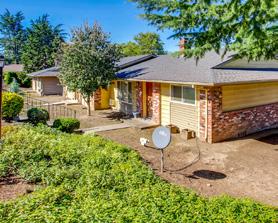
HFO was one of the national commercial real estate publication’s picks for the top individuals, teams, and companies in the multifamily sector from the past year.
We were extremely proud to be recognized as a Green Streets Trash Champion for the team’s work collecting waste on the streets near the HFO offices throughout the year.
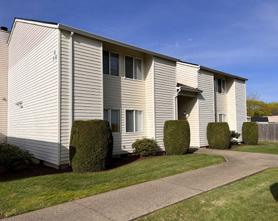
GlobeSt.com / Real Estate Forum Multifamily Influencers Trash Champions!
the
team was proud to have our efforts recognized by several groups
See
of the organizations
worked
or who celebrated
efforts to serve our clients and communities this year: HFO Sale: Tigardville 36 Units in Tigard, OR HFO Sale: Murdock Apartments 56 Units in Sherwood, OR HFO Sale: Homestead Commons 28 Units in Tigard, OR HFO Sale: Vance Terrace Apartments 22 Units in Rainier, OR HFO Sale: Gainsboro Apartments 32 Units in Portland, OR HFO Sale: Arboretum Apartments 23 Units in Salem, OR 27 The Northwest Apartment Investor
HFO’S
In 2022,
HFO
throughout the year.
below some
we
with
HFO’s
Register Now!
HFO Investor Roundtable

Miller Hall – World Forestry
(near the Oregon Zoo)
Center
Wednesday, January 4th, 2023
Multifamily investors are invited to sign up for our annual event. Speakers include economist John W. Mitchell, who will offer economic forecasts for our region and the national multifamily market, Kyle Sund of Moss Adams, who will discuss cost segregation, and Blake Hering of Gantry, Inc., who will speak to the state of the lending market.
Check your email for a link to RSVP, or email service@hfore.com or call (503) 241.5541.
A member of HFO Investment Real Estate (503) 241.5541 • www.hfore.com
Sponsored in part by:
From the entire HFO team
HFO Investment Real Estate (503) 241.5541 • www.hfore.com
Build your legacy








 Michael Havlik, CPM® Academic Director, Property Management mhavlik@pdx.edu
Michael Havlik, CPM® Academic Director, Property Management mhavlik@pdx.edu

















 Advertorial
Advertorial











